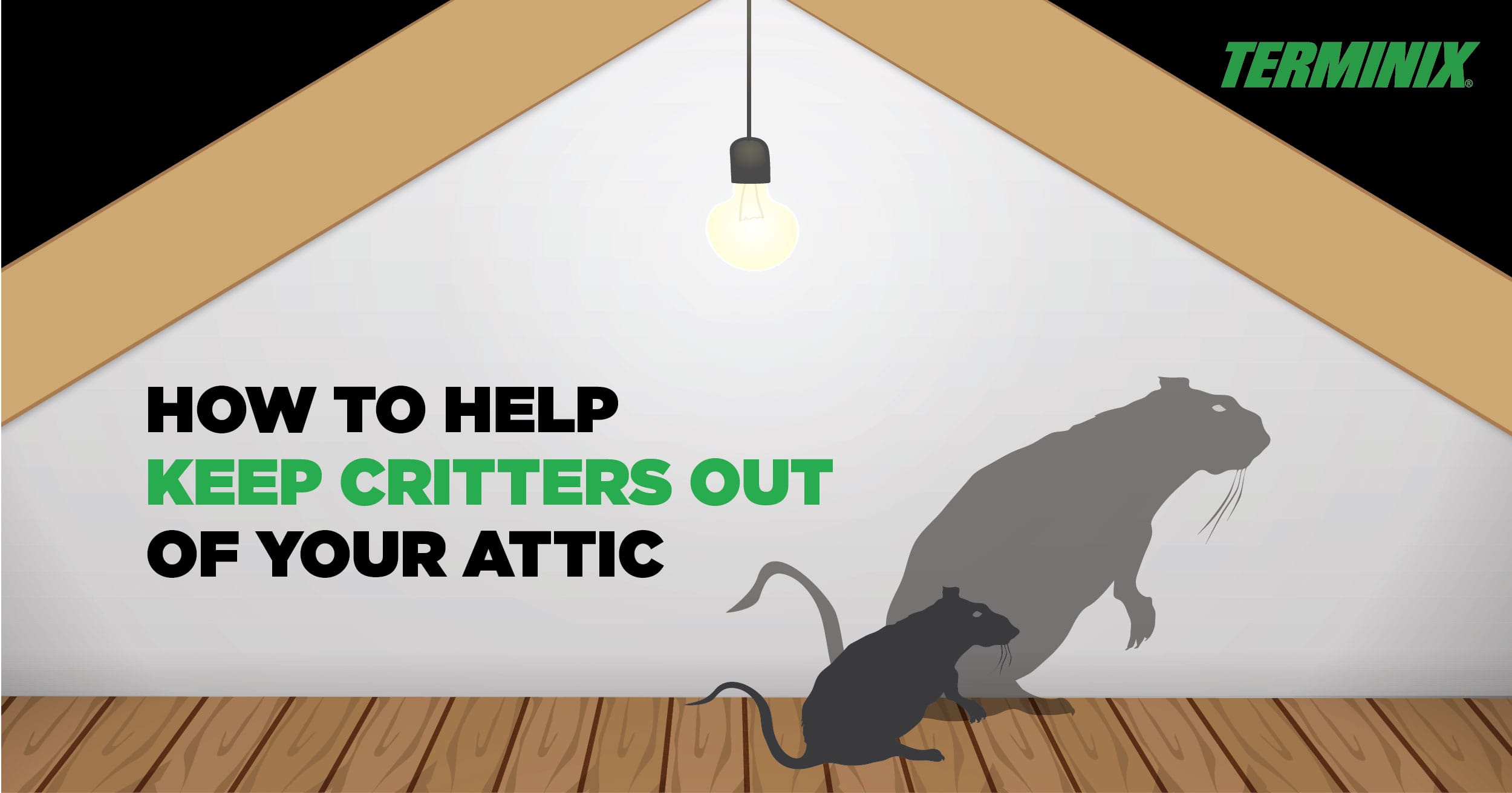Few things are more unpleasant than an unwelcome visitor. This is especially the case when the unwelcome visitor happens to be a raccoon, squirrel, pigeon or other pest that has made itself at home in your attic.

Your attic is a desirable home for wildlife looking for a warm and cozy respite from the elements. To avoid becoming a reluctant landlord to ruckus-causing animal tenants, take these simple steps:
1. Check to see if there are animals in your attic.
First things firsts, you should contact a wildlife control professional to inspect and make sure your attic is not already home to animals. Signs of pests in your attic include droppings; nests made of paper, leaves and twigs; wrecked insulation; and damage to ducts and these are things a professional is trained to look for.
Animals may also give themselves away by the sounds they make, such as gnawing and squeaking (rodents); scurrying footsteps (squirrels and rodents); and purrs, whimpers and growling (raccoons).
2. Thoroughly inspect the exterior of your home.
As you would expect, animals typically enter your attic through holes or structural openings, (such as vents and chimney pipes,) in the exterior of your home.
One of the best preventive measures you can take to help bar animals from entering your attic is to find any openings or weak areas and eliminate them.
While walking the perimeter of your house, inspect the roof and the seams between the roofing and siding/brick for holes. Persistent rodents can exploit even small holes.
There are many areas you cannot see from the ground, so those areas may need professional inspection.
3. Install coverings over any holes or openings.
If you come across holes or openings on the exterior of your house, have them properly addressed by a professional. If you have animals, you will need to make sure they are out of the house before you proceed.
When sealing openings in your home, make sure to cover a few inches of space around the edges to prevent rodents from gnawing away and breaching the seal.
Install vent covers over soffit vents if they are uncovered. Finally, add heavy-duty steel screens over attic vents. Use U-shaped nails to fasten the screen and be sure to use a screen that does not block airflow.
4. Trim trees and remove attractions from around your house.
You can make it harder for rodents to sneak into your attic by trimming tree limbs. Squirrels can jump up to 6 to 8 feet. Make sure tree limbs are not in jumping distance from your house.
In addition, eliminate food sources from around your house to help avoid attracting the wrong kind of attention from animals. Make sure your trash bins are tightly closed. Feed your pets inside the house or promptly remove food bowls after feeding. And pick up dropped fruits or nuts from trees in your yard.
5. Consider contacting a professional for removal.
As a homeowner, it can be very difficult to effectively keep critters away by using DIY methods. Contacting a professional is the best option for eliminating pest problems in your home because they can identify the problem and implement solutions for you safely and effectively.
Wildlife is wonderful, as long as they don't intrude on your home. By taking these simple steps, you can help prevent critters from wandering into your attic and giving you a time-consuming — and possibly expensive — headache.


